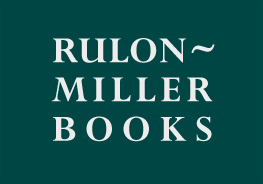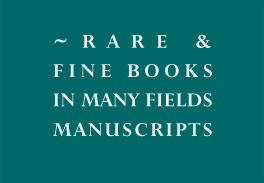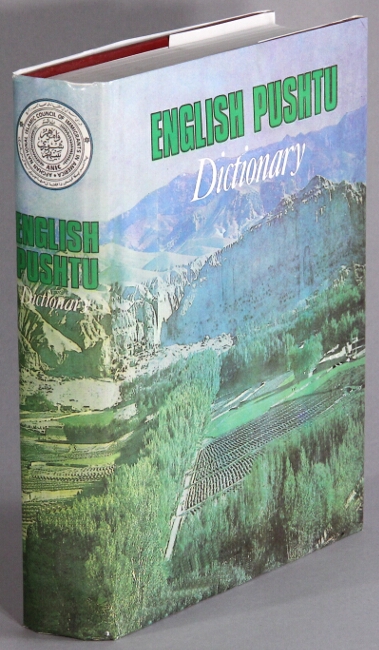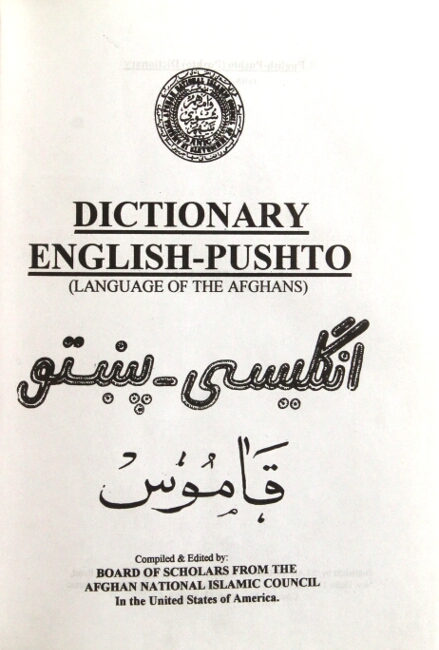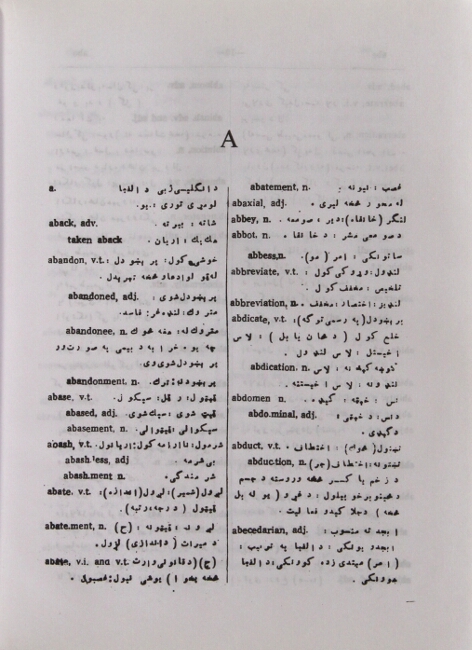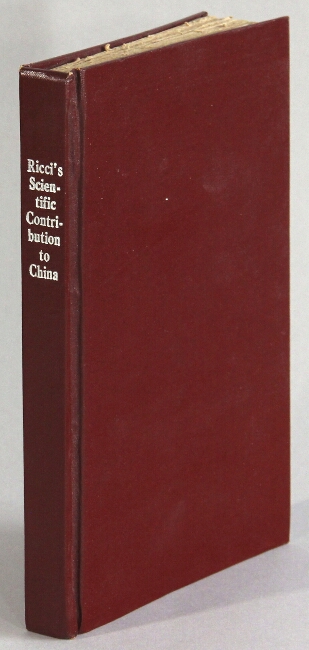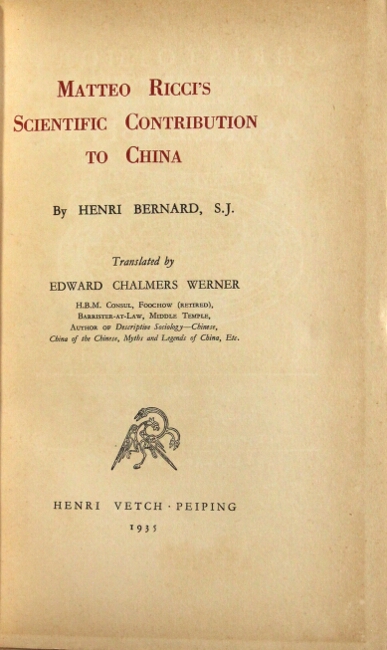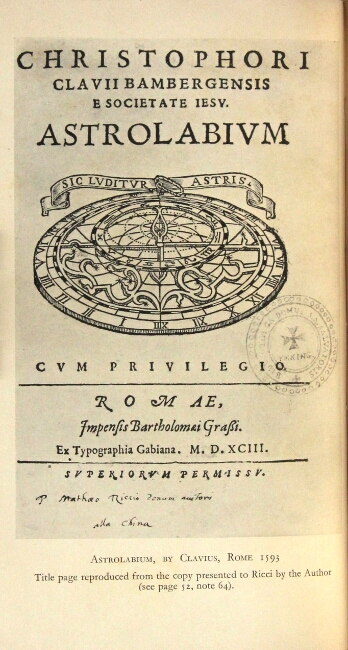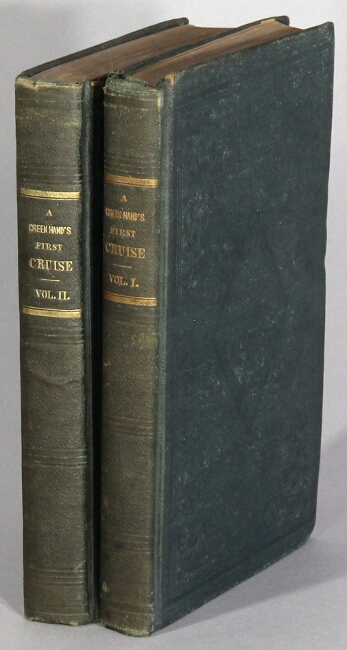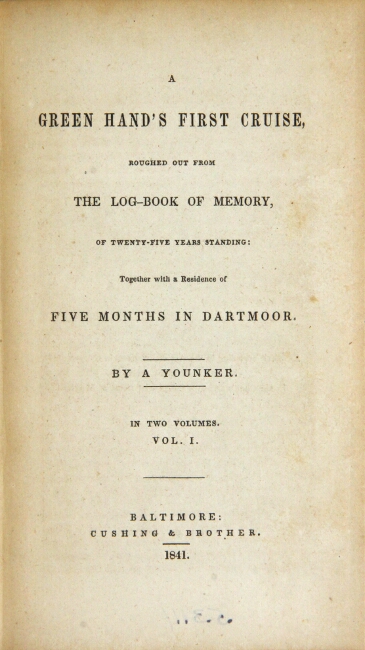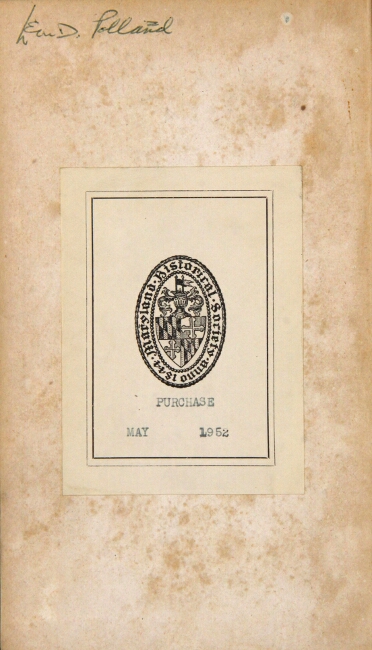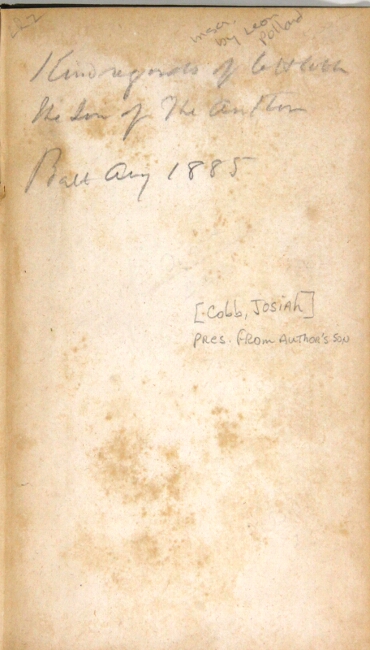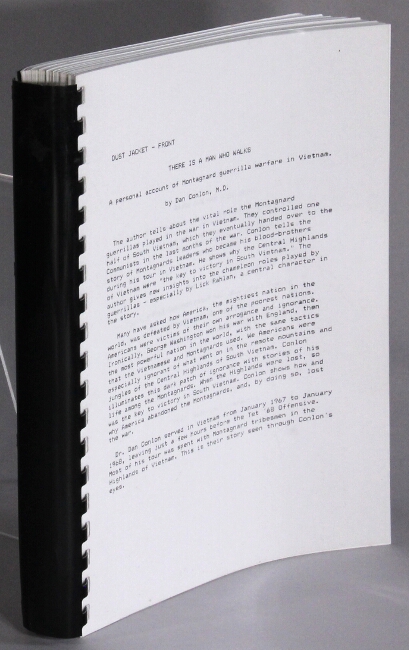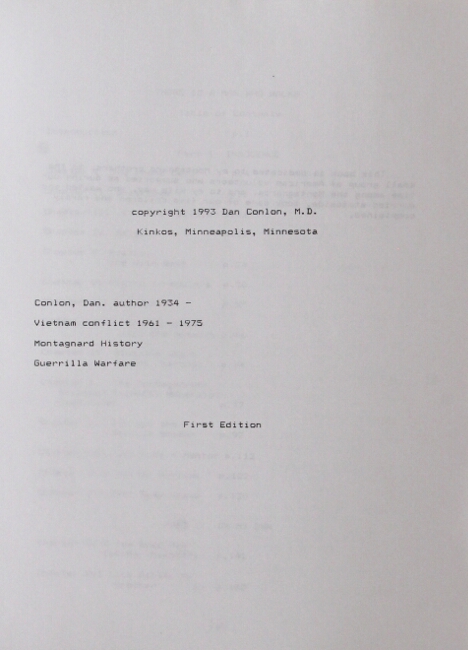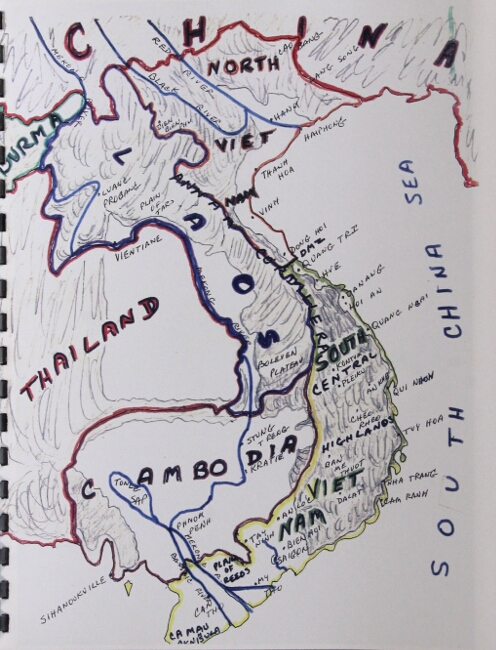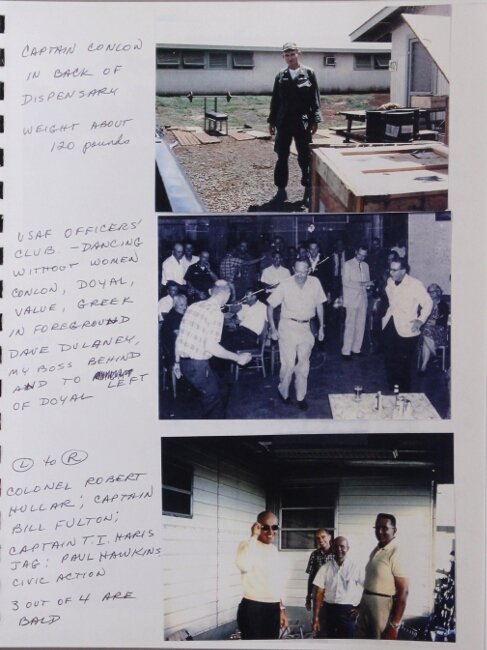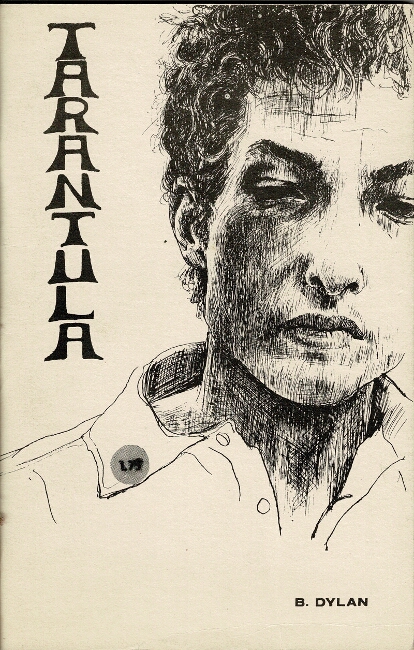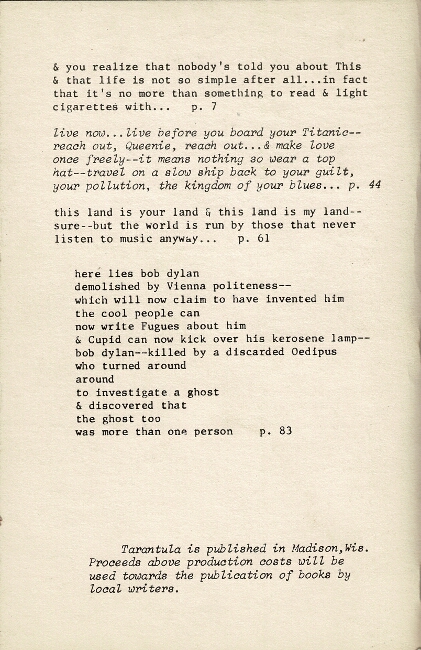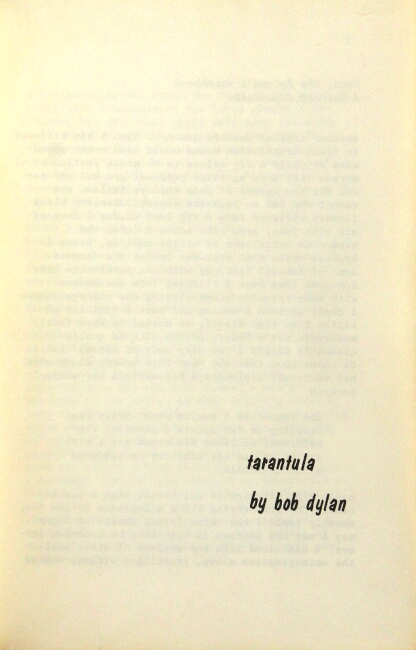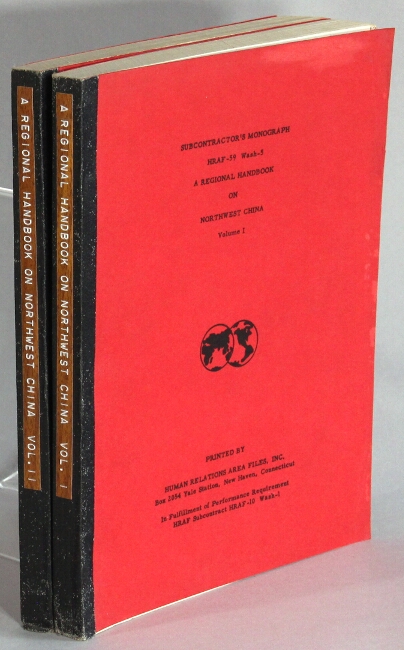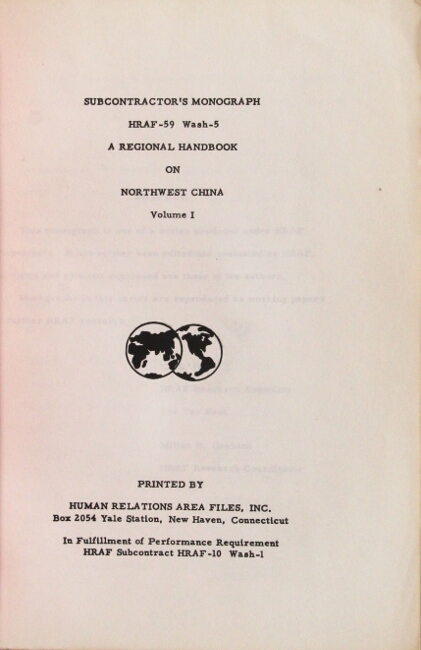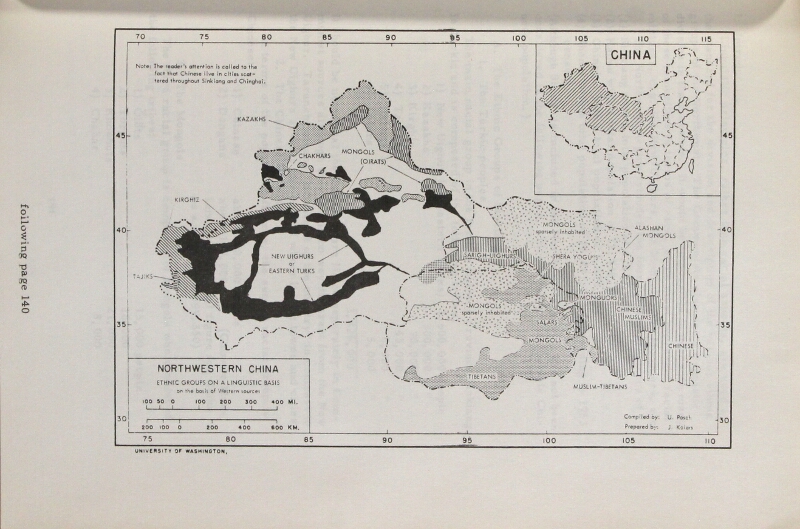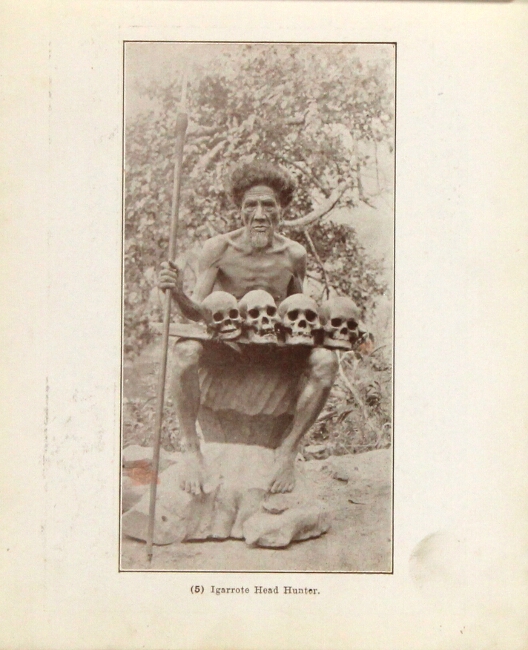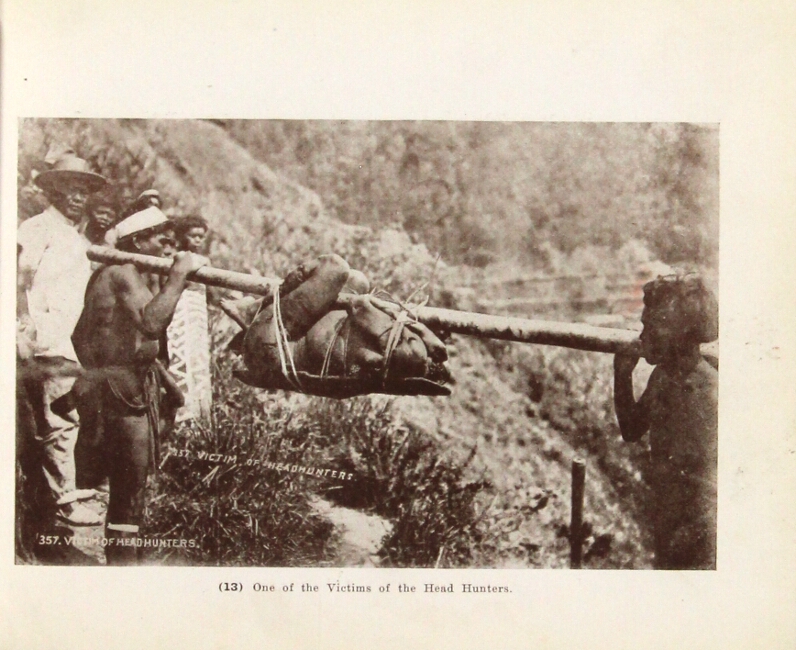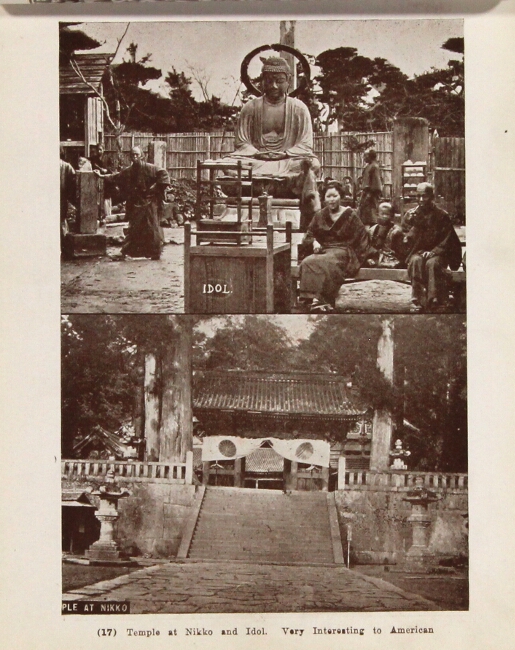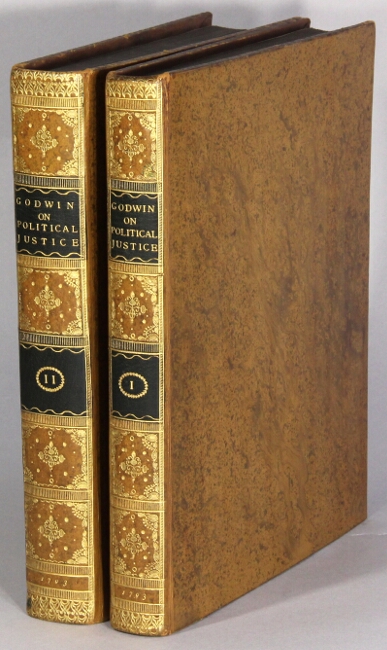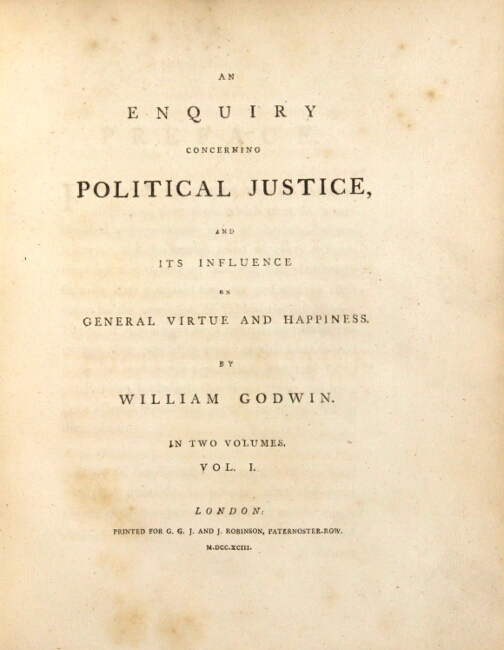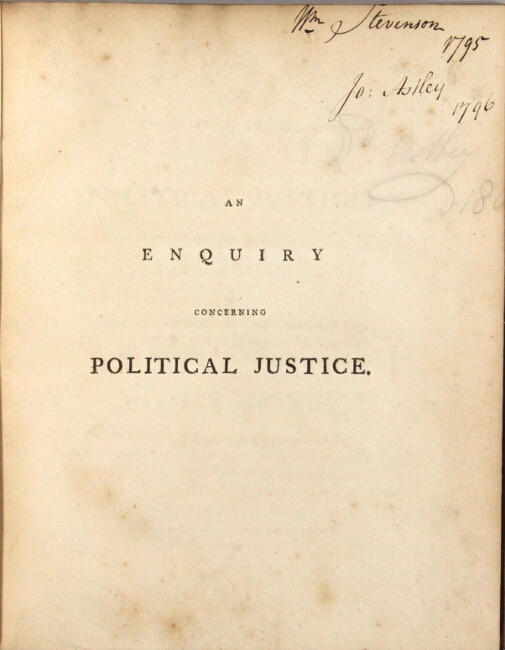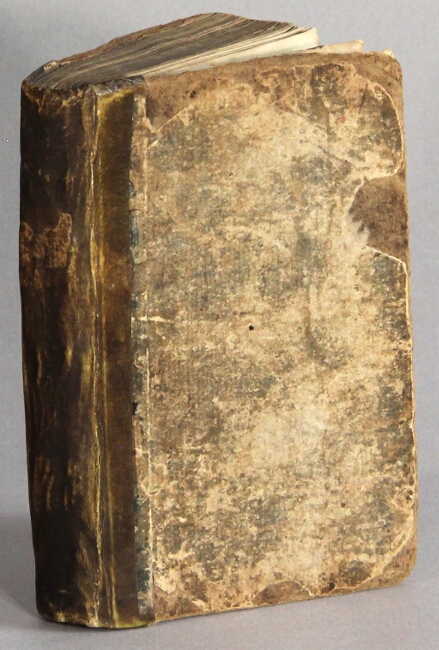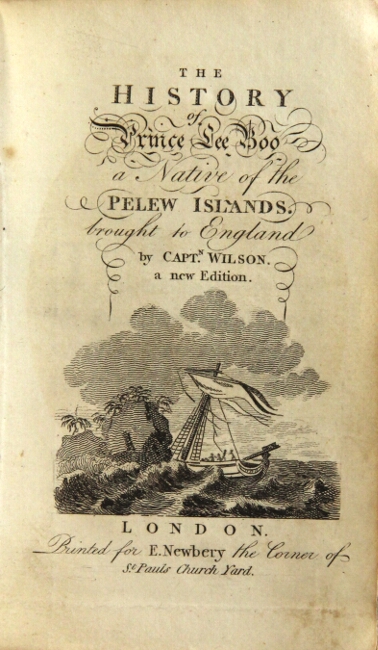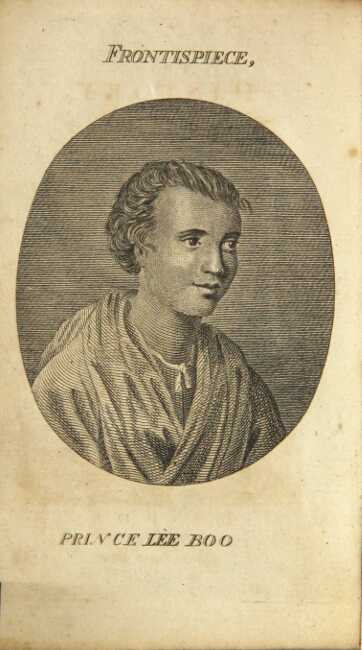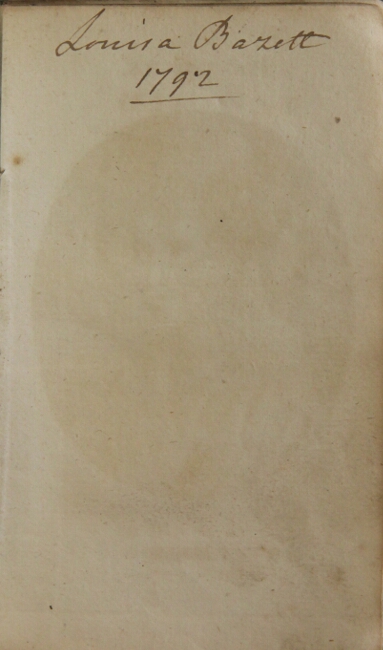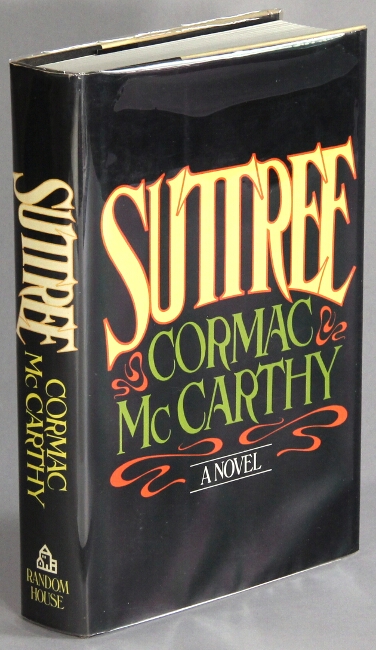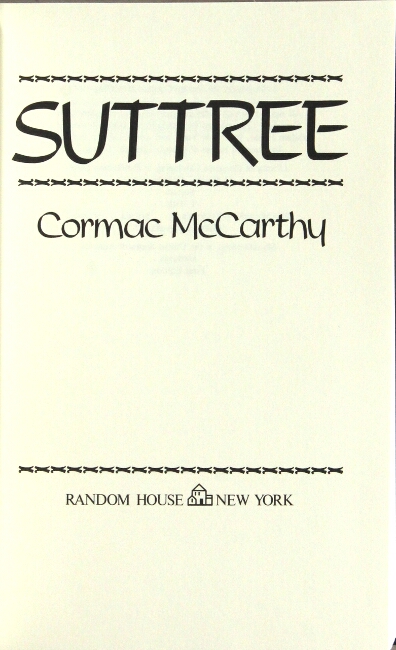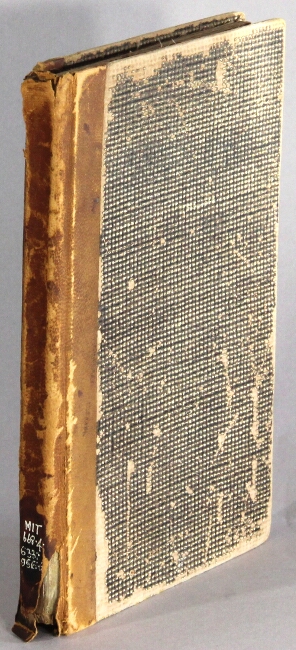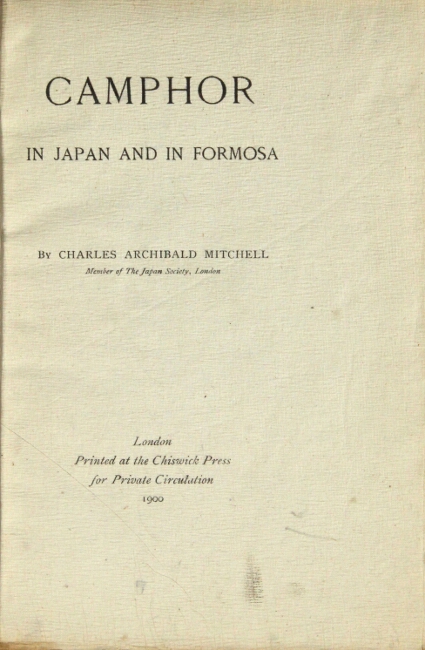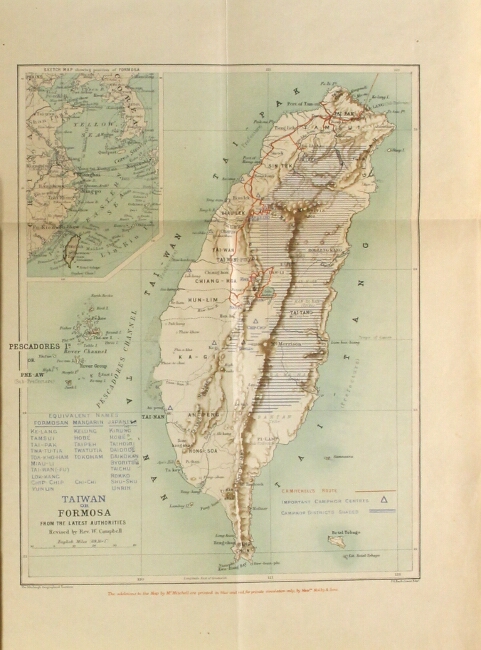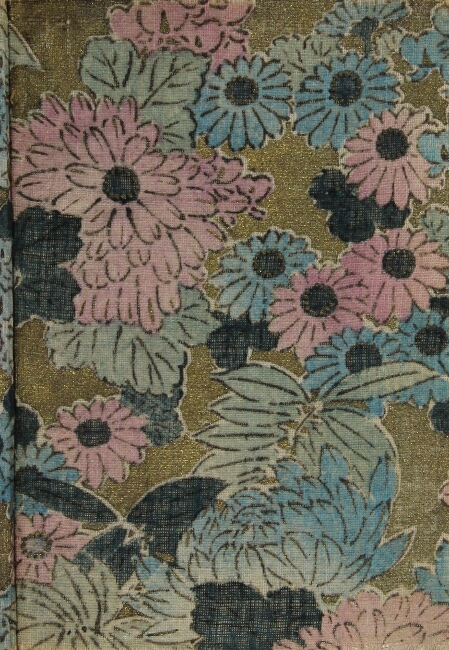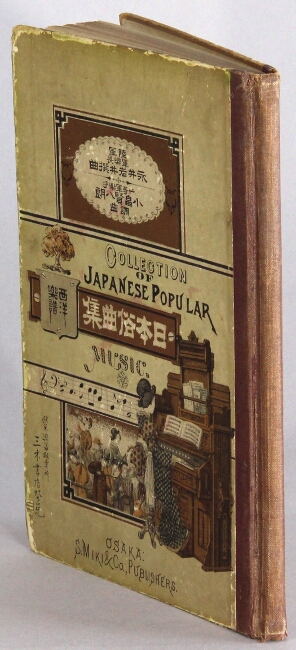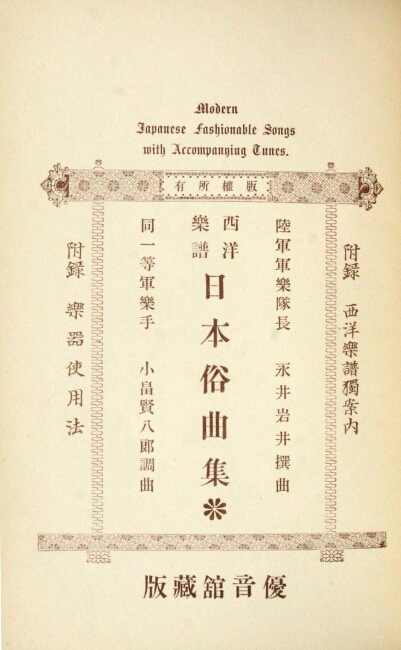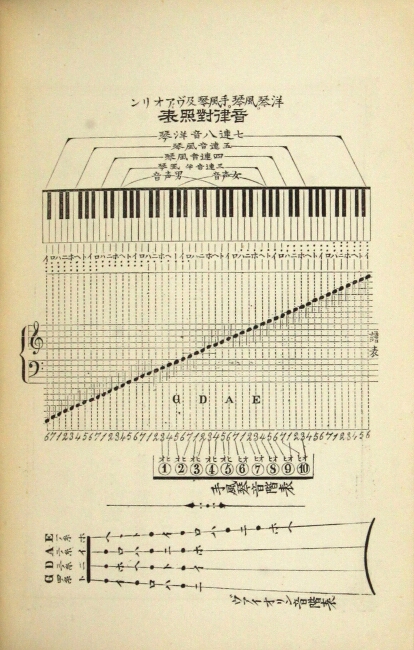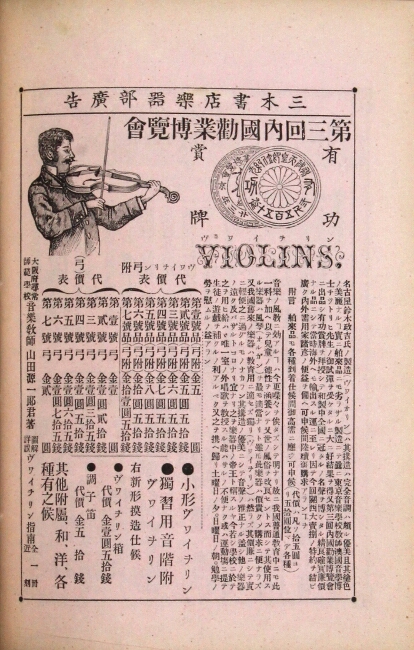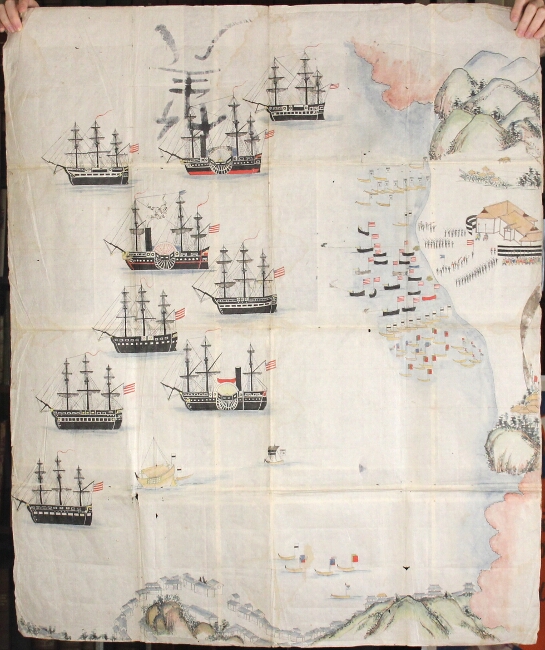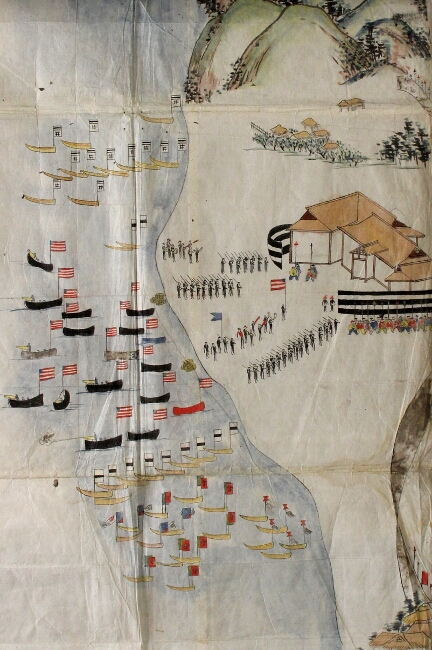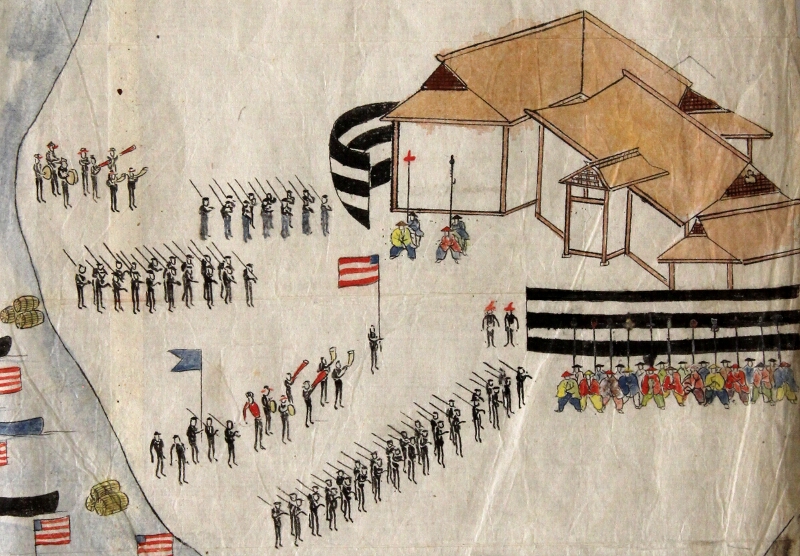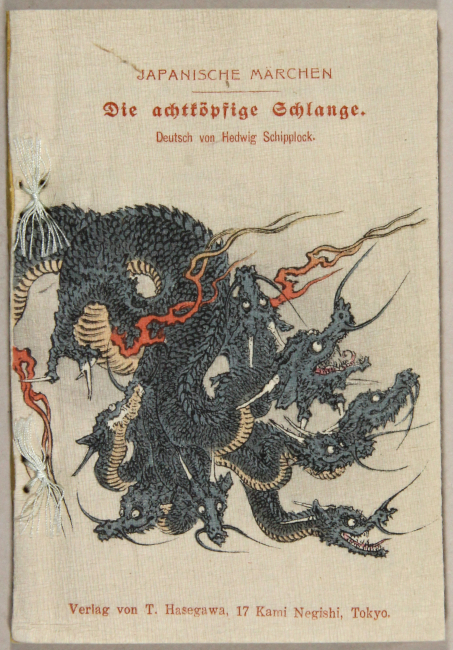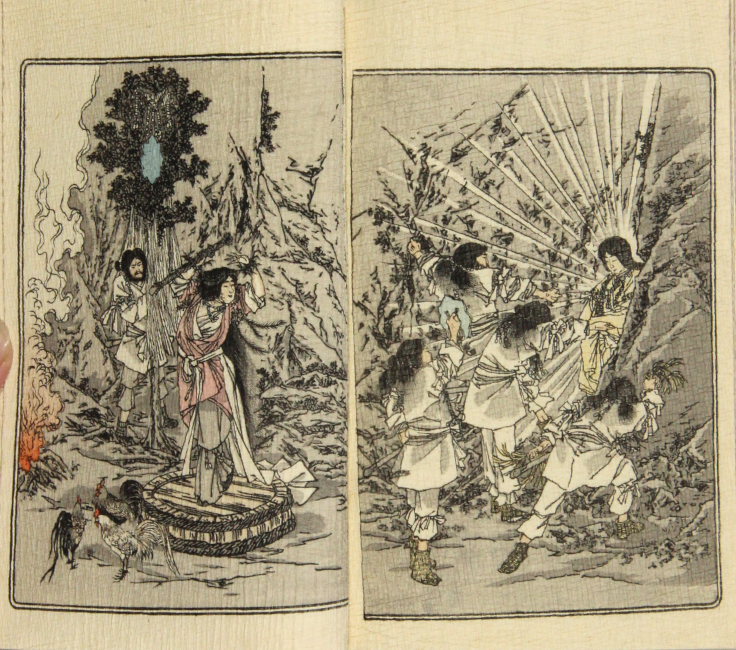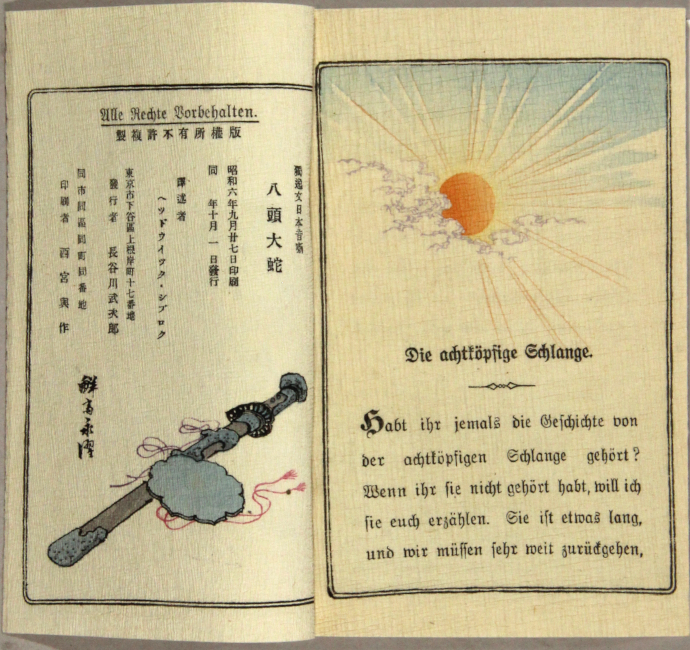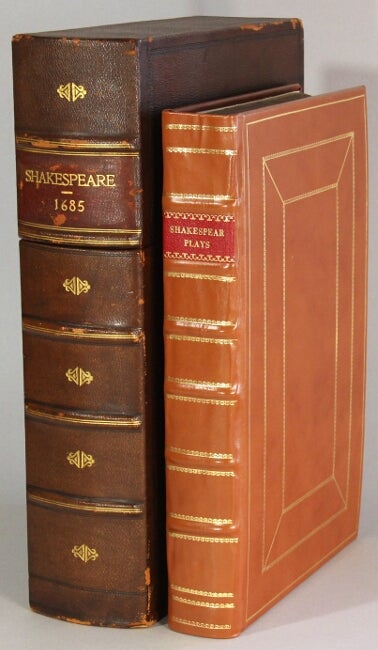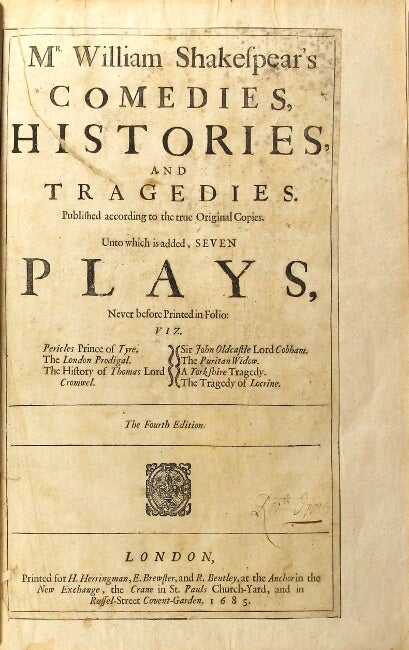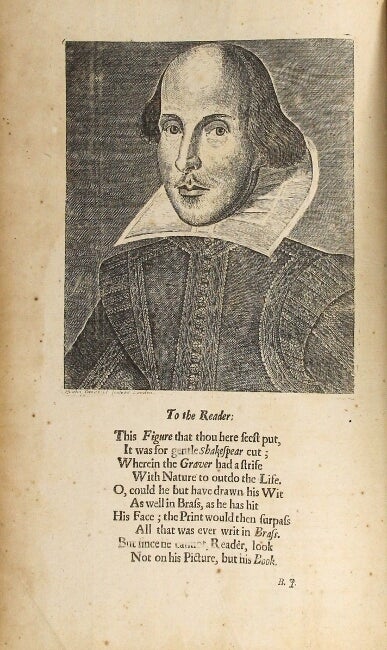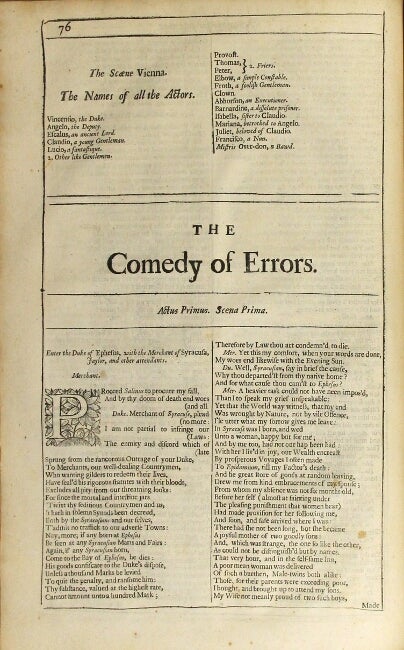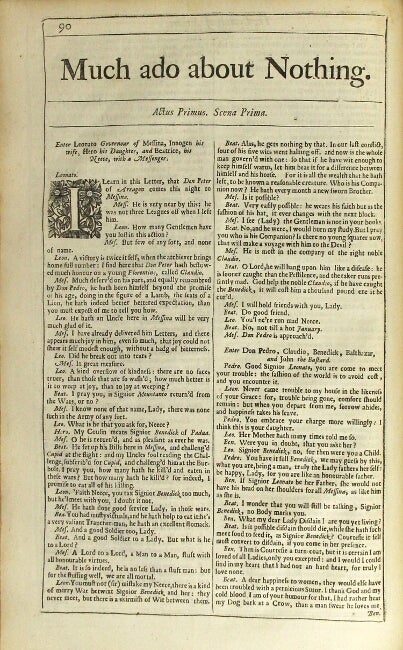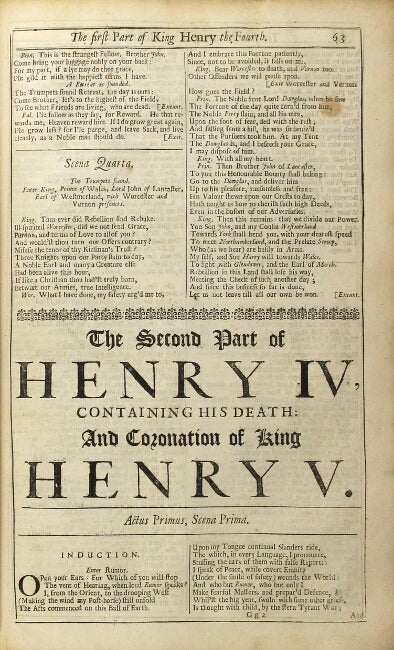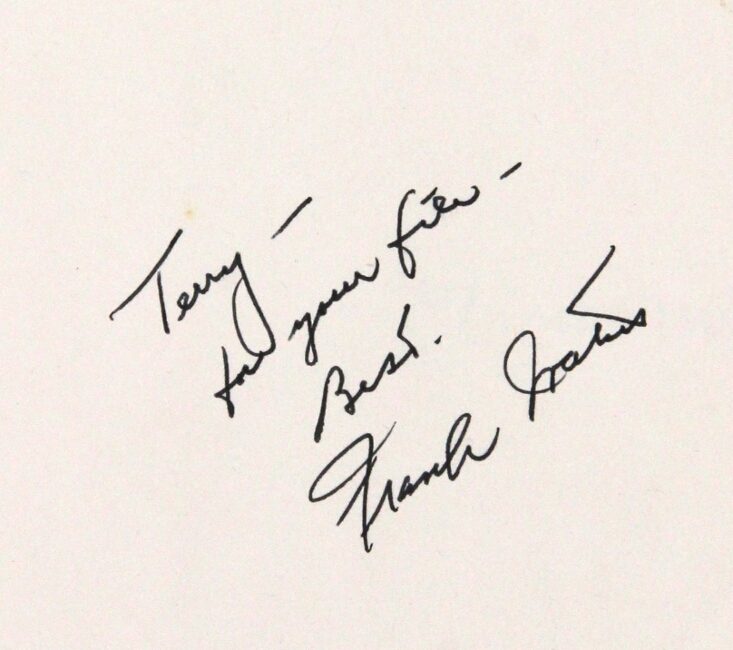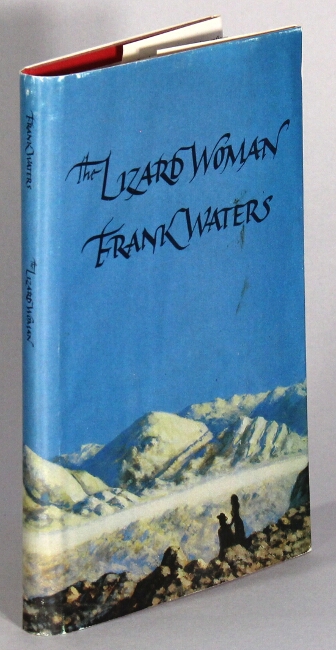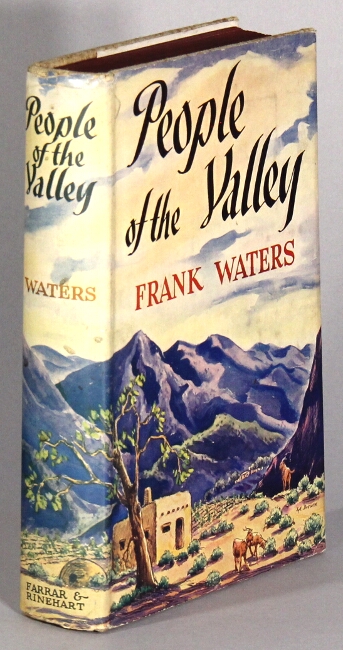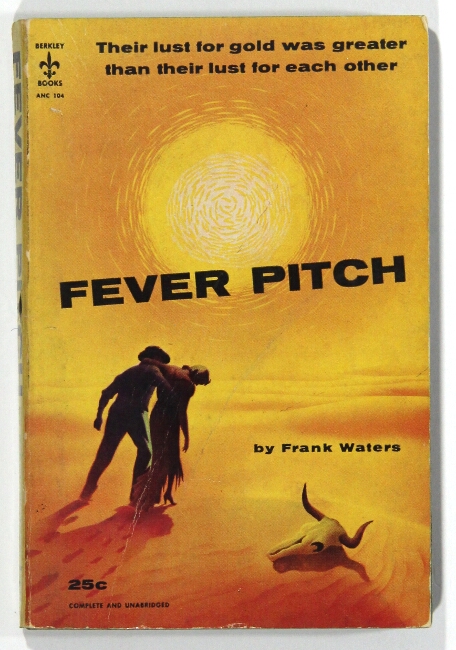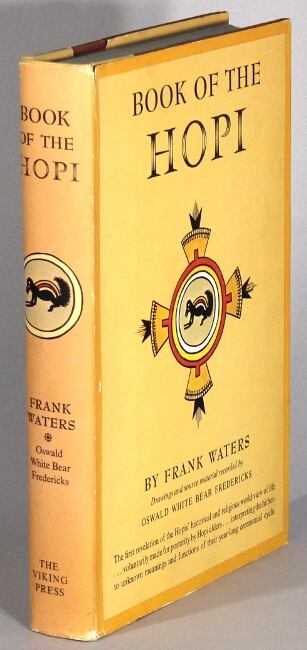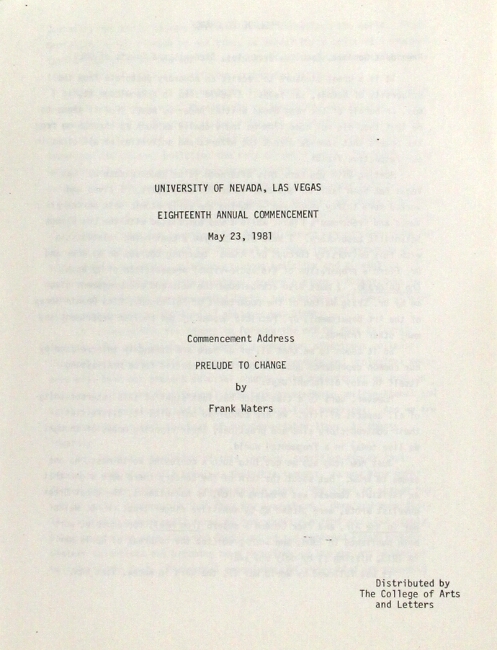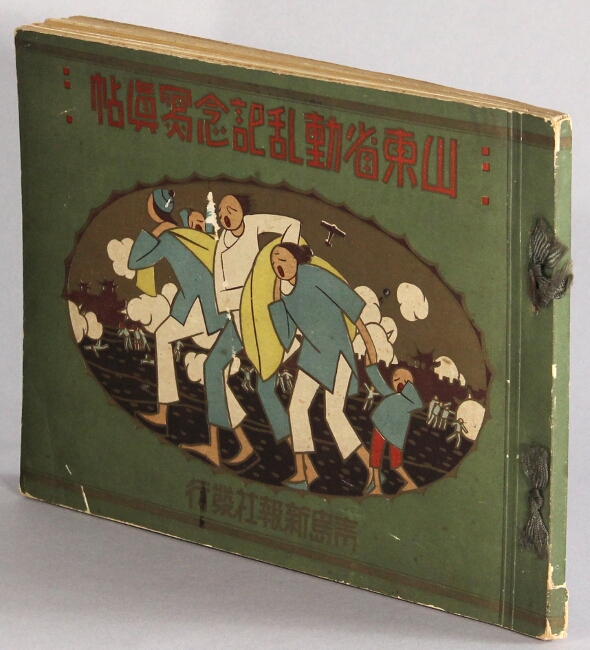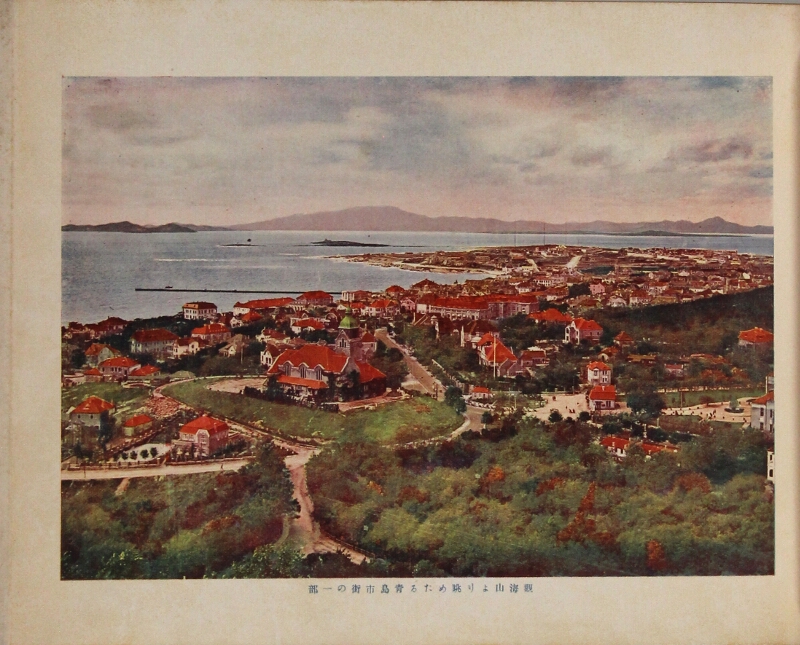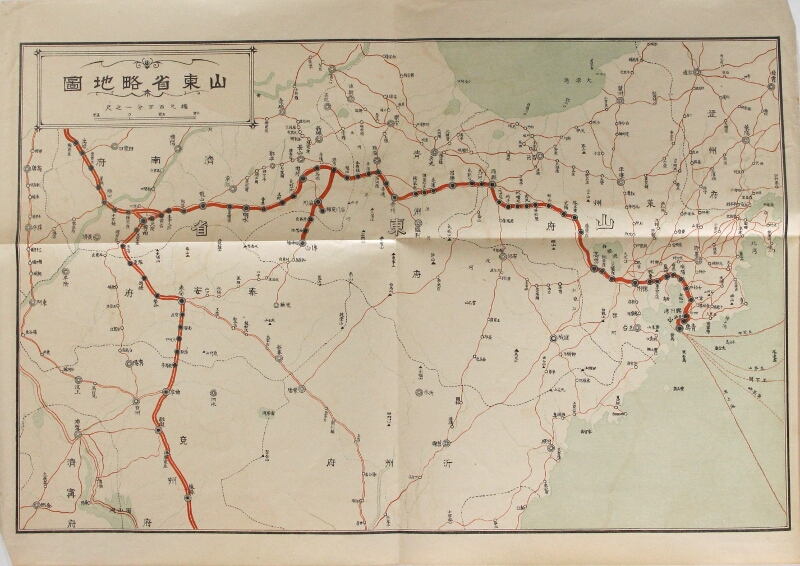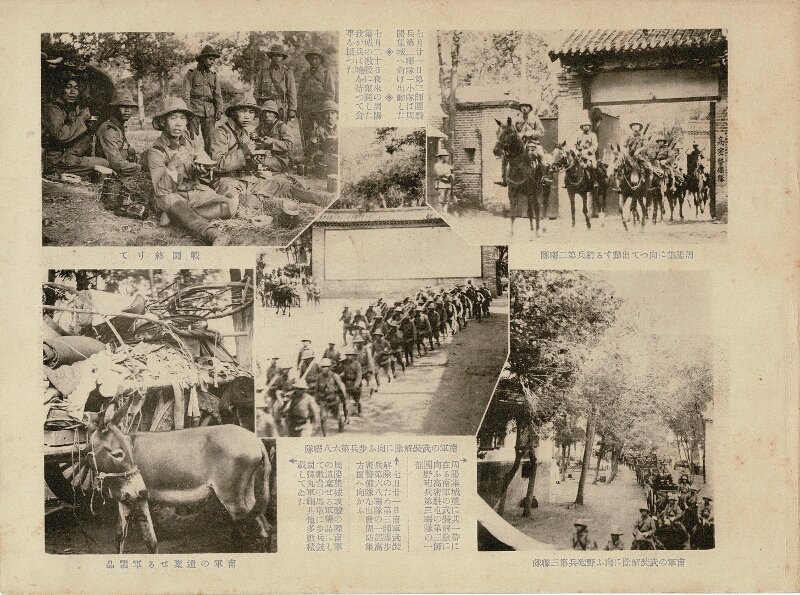Recent Acquisitions
January 14th, 2025
To order call toll-free at (800) 441-0076 or 651-290-0700
or email rulon@rulon.com
or, click on the "add to cart" link to order through our website. Phone calls and emails are generally quicker.
All books are guaranteed genuine as described, and are returnable for any reason during the first week after receipt. If you are returning an item, please let us know so we can make it available to another customer.
Shipping and handling charges are extra and billed at cost.
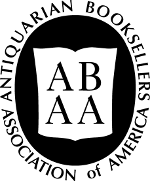
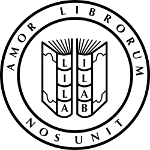
A note on OCLC
As is now the norm, OCLC counts are tentative, at best, as we recognize that searches using different qualifiers will often turn up different results. Searches are now further complicated by the vast numbers of digital, microfilm, and even print-on-demand copies, which have polluted the database considerably, making it difficult, without numerous phone calls or emails, to determine the actual number of tangible copies. Hence, even though the counts herein have been recently checked, most all should be taken as a measure of approximation.

1. Dictionary English-Pushto (language of the Afghans). [New Delhi: Star Publications ... in collaboration with Afghan National Islamic Council, New York, 2004].
$150
Revised edition, 4to, pp. [9], 10-820; printed from typescript; fine copy in a fine dust jacket.
Only two copies in OCLC: Oxford and Berlin.

2. Matteo Ricci's scientific contribution to China ... Translated by Edward Chalmers Werner. Peiping [i.e. Beijing]: Henri Vetch, 1935.
$150
First edition in English, 8vo, pp. [4], 108; 6 facsimiles on 4 plates; later red cloth stamped in silver on spine; very good, sound, and clean.

3. A green hand's first cruise, roughed out from the log-book of memory, of twenty-five years standing: together with a residence of five months in Dartmoor. By a Younker. Baltimore: Cushing & Brother [volume I]; Boston: Otis, Broaders, and Company [volume II], 1841.
$850
First edition, 2 volumes, 8vo, pp. iv, [5], 14-278; [5], 6-329, [1]; original green cloth, gilt-stamped spines; each volume with a historical society bookplate; generally, very good and sound.
With a presentation from the author's son in each of the volumes in pencil dated "Balt[imore], 1885." Volume I also bears the ownership inscription of marine historian Leon Polland.
The author's recollections of the War of 1812. He describes his capture by the British, his time as a prisoner and his months in Dartmoor, with an account of the murder of American prisoners there. Dartmoor prison, in England, was built originally for French prisoners, and during the War of 1812 had within its walls 2,500 impressed sailors claiming to be American citizens and refusing to serve in the British navy against their country. A number were captured on the high seas or taken out of privateers and other American vessels, and kept until the close of the war, often with great suffering. Their harsh treatment caused a great deal of excitement in America, especially on an occasion when a guard fired upon the prisoners in what is known as the Dartmoor massacre. Cobb was one of the lucky survivors.
The book is something of a publishing oddity. Volume I was published in Baltimore in 1841. Volume II was published in Boston by a different firm in the same year. Both volumes are sound in matching blind-stamped publisher's green cloth bindings, with gold lettering on backstrips slightly at odds. Both volumes were printed by John D. Toy in Baltimore, and both bear a copyright from the District Court of Maryland. There's likely a story here, but I haven't unearthed it.

4. There is a man who walks: a personal account of Montagnard guerrilla warfare in the Highlands of South Vietnam. Minneapolis: privately published, 1999.
$150
First edition, 4to, pp. [2], vi, 392, [1]; numerous illustrations and maps, some in color; printed at Kinkos from typescript; spiral-bound; fine. The book was ultimately published in 2013 by Praetorian Gate Publishing in Minneapolis.
"The author tells about the vital role the Montagnard guerrillas played in the war in Vietnam. They controlled one half of South Vietnam, which they eventually handed over to the Communists in the last months of the war. Conlon tells the story of Montagnards leaders who became his blood-brothers during his tour in Vietnam. He shows why the Central Highlands of Vietnam were 'the key to victory in South Vietnam.' The author gives new insights into the chameleon roles played by guerrillas especially by Lick Rahlan, a central character in the story. Many have asked how America, the mightiest nation in the world, was defeated by Vietnam, one of the poorest nations. Americans were victims of their own arrogance and ignorance. Ironically, George Washington won his war with England, then the most powerful nation in the world, with the same tactics that the Vietnamese and Montagnards used. We Americans were especially ignorant of what went on in the remote mountains and jungles of the Central Highlands of South Vietnam. Conlon illuminates this dark patch of ignorance with stories of his life among the Montagnards. When the Highlands were lost, so was the key to victory in South Vietnam. Conlon shows how and why America abandoned the Montagnards, and, by doing so, lost the war. Dr. Dan Conlon served in Vietnam from January 1967 to January 1968, leaving just a few hours before the Tet '68 Offensive. Most of his tour was spent with Montagnard tribesmen in the Highlands of Vietnam. This is their story seen through Conlon's eyes."
Only St. John's University in OCLC.

5. Tarantula. [Madison, Wisconsin: 1971].
$125
8¼" x 5¼" staple-bound pamphlet; printed from typescript; 8vo, pp. [2], 2-95; original pictorial wrappers; lightly toned else near fine. This was also issued in yellow and mauve pictorial wrappers.
From "aretha/ crystal jukebox queen of him and hymn diffused in drunk transfusion" to "the lumberjacks are coming" this poetical prose meditation defies classification. Blam de lam!
Apparently, one of the last of the so-called "bookleg" editions, the first of which was issued in New York City by A. J. Weberman in early 1970. (See Derek Barker's article in Isis 173, pp. 42-45).

6. [Far Eastern and Russian Institute, University of Washington, Seattle.] Subcontractor's monograph HRAF-59 Wash-5: A regional handbook on northwest China. New Haven: Human Relations Area Files, Inc., 1956.
$100
2 volumes, 4to, pp. [14], 363, [1]; [8], vi, 364-704, [2]; printed from typescript; tables and maps in the text; near fine on original printed red wrappers, black cloth spines with labels on spines.

7. Scenes taken in the Philippines, Japan, and on the Pacific relating to soldiers [cover title]. San Francisco: J. D. Givens, 1914.
$500
Obling 8vo, string-bound, 98 leaves containing approximately 234 photographic illustrations with captions (some dated 1911), primarily by Givens, but other photographers (D. S. Cole and 'Gordon Photo') are also credited; some wear, but generally very good, without a title page, as issued.
James David Givens (1863-1939) had a studio in the Presidio in San Francisco in the early 1900s. This album documents the experiences of American soldiers in the Philippines during the Spanish-American War and particularly the Moro Rebellion, as well as other events in the Philippines in the early 1900s. Among these are a number of rather gruesome images of hangings, executions, corpses on the battlefield, dismemberments, native nudity, Igarrote head-hunters, and the effects of the eruption of Taal Volcano in 1911. Also, several images of Hawaiian interest, and Japan.
The book was published under at least three different imprints and the illustrations seem to vary edition to edition.

8. Enquiry concerning political justice, and its influence on general virtue and happiness. London: printed for G. G. J. and J. Robinson, Paternoster Row, 1793.
$9,500
First edition, 2 volumes, 4to, pp. xiii, [21], 378, [2]; [28], [379]-895, [1]; both half-titles present; errata and directions to the binder leaf at end of volume 1 as noted in Rothschild; a very nice copy in contemporary full mottled calf, imperceptibly and sympathetically rebacked with smooth gilt-decorated spines laid out in 6 compartments, black morocco labels in 2; occasional light scattered foxing; otherwise fine, bright, sound and clean.
Early ownership signature on the half-titles in both volumes of "William Stevenson 1795" (slightly cropped at the top in volume I and more so in volume II) and "Jo. Astley 1796." Stevenson is possibly the Scottish non-conformist writer and preacher, better known as the father of Elizabeth Gaskell. At the time Stevenson was living in Manchester where he was classical tutor, but then abruptly resigned his posts, and moved to Saughton to farm. Hence, the short period of his ownership before the book passed to Astley whom we have not been able to trace.
Godwin "saw no good in human institutions and sought to put an end to all organized politics, religion and society … The Enquiry was, and remained, the work by which he was best known. It was one of the earliest, the clearest, and most absolute theoretical expositions of… anarchist doctrine. Godwin believed that the motives of all human action were subject to reason, that reason taught benevolence, and that therefore all rational creatures could live in harmony without laws and institutions. Believing in the perfectibility of man, he thought 'that our virtues and vices may be traced to the incidents which make the history of our lives, and if these incidents could be divested of any improper tendency, vice would be extirpated from the world'. All control of man by man was intolerable and 'government by its very nature counteracts the improvement of the original mind'… Godwin's passionate advocacy of individualism, his trust in the fundamental goodness of man, and his opposition to all restrictions on liberty, have endured" (Printing and the Mind of Man, no. 243).
"The work was an immediate success, establishing Godwin as the undaunted champion of philosophical enquiry, private judgement, and public benevolence, who predicted the gradual liberation of mankind from the shackles of government and, ultimately, mortality through the development of knowledge and the powers of the mind" (ODNB).
Rothschild 1016.

9. Rgyal ba sku phreng bcu bzhi pa ngos 'dzin dang gser khrir mnga' gsol zhu tshul sogs mdo tsam bkod pa = Report on the discovery, recognition and enthronement of His Holiness the XIV Dalai Lama. [Gangtok, Sikkim: Sikkim Institute of Tibetology, 1972].
$1,500
29 leaves, approx. 3¾" x 18", woodblock-printed, edges stained red, on Tibetan handmade paper. Text in Tibetan.
The 14th Dalai Lama (born 6 July 1935), full spiritual name: Jetsun Jamphel Ngawang Lobsang Yeshe Tenzin Gyatso, shortened as Tenzin Gyatso is the incumbent Dalai Lama, the highest spiritual leader and head of Tibetan Buddhism. He was formally recognized as the 14th Dalai Lama in 1939 and his enthronement ceremony was held in Lhasa in 1940. He was exiled in 1959 and currently lives in India.
The text is likely a reimpression from the original woodblocks made at Lhasa in 1940 of a Tibetan translation of Report on the Discovery, Recognition and Installation of the Fourteenth Dalai Lama by Political Officer of Sikkim Basil Gould, the British Political Officer in Sikkim from 1935 to 1945. This appears to be the only such reimpression. An excellent assessment of the original woodblock printing is by Ulrike Roesler, University of Oxford:
"This [the 1940 version] is a Zhol blockprint of 29 folios, identical with the one from the Wheeler archive. Martin: 178, no. 439 moreover mentions an ‘Impression from blocks preserved at the Namyal Institute of Tibetology’ (Gangtok 1972), in 29 folios [as here], which is likely to have been produced from the same printing blocks, but I have not seen this version and therefore cannot confirm this." (See: "Explaining the Dalai Lama to the Tibetans: Basil Gould’s Report on the Enthronement of the 14th Dalai Lama," by Ulrike Roesler, University of Oxford, in On a Day of a Month of the Fire Bird Year: Festschrift for Peter Schwieger on the Occasion of his 65th Birthday. Lumbini, 2020).

10. [Juveniles.] The history of Prince Lee Boo a native of the Pelew Islands. Brought to England by Capt. Wilson. A new edition. London: E. Newbery the corner of St Paul’s Church Yard, n.d., [1789-1795].
$250
16mo (approx. 5½" x 3¼"), pp. viii, 178, [6] Newbery ads; inserted engraved frontispiece portrait and title page, 5 engraved plates (1 hand-colored); contemporary and likely original parchment-backed marbled boards; binding skewed; text clean; a good copy. Early ownership signatures of "Hen C Bazett," and "Louisa Barett 1792".
There is only one undated edition printed for E. Newbery with the above collation in Roscoe which he tentatively dates 1789-1795?. The inscription in this copy puts it at no later than 1792. Roscoe does admit that there are many undated copies of this title that he has not examined.
Wikipedia notes that "Prince Lee Boo (1764 -1784) was the son of Ibedul, the ruler of Koror in the Pelew Islands, now called Palau. Prince Lee Boo was one of the first people from the Pacific Islands to visit Great Britain. When the China trader Antelope, was wrecked on the island of Oroolong in Western Palau in 1783, its survivors, including Captain Henry Wilson spent three months on Palau. When the survivors were finally rescued, Captain Wilson agreed to take the second son of Ibedul to London to acquire more knowledge about Europe. He arrived around a decade after the Tahitian Omai, and was quickly dubbed `The Black Prince` by London society, who were charmed by his poise and intelligence. He attended church ceremonies, dinner parties and European school; however, he died of smallpox in May 1784, some six months after his arrival in London on 27 December 1784, aged 20 years."
Roscoe J170(2).

11. Suttree. New York: Random House, [1979].
$2,500
First edition, 8vo, pp. [8], 471, [1]; the spine of the (unclipped) jacket ever-so-slightly sunned, else a fine, bright copy.

12. Camphor in Japan and Formosa. London: printed at the Chiswick Press for private circulation, 1900.
$150
8vo, pp. [6], 66, [2]; printed on double leaves on crepe paper throughout except for the folding map of Formosa printed in color; several tables in the text; decorative floral endpapers also on crepe paper; ex-BX Plastics Limited, with bookplate, and occasional rubberstamps of the British Xylonite Co.; original sheep-backed foil paper-covered boards, shelf mark at the base of the spine, bottom of spine separating, edges rubbed and worn, boards scraped, but the binding remains sound.

13. A collection of Japanese popular musics [sic] [English title]. 日本俗曲集 : 西洋楽譜 = A modern Japanese fashionable comical dancing theatrecal shamisen and koto music. [Japanese title]. Osaka: S. Miki & Co., 1892.
$225
First edition, 8vo, pp. [112]; several illustrations, musical notation throughout; several pages printed in color, ad for violins printed on pink paper; some wear and rubbing, but generally very good. At the head of the title page: "Fashionable edition."
Includes music (unaccompanied melodies) in regular notation in addition to the Japanese notation. Lyrics in Japanese and Japanese transliteration.

14. [Perry, Matthew Calbraith.] Contemporary Japanese rendition of the signing of the treaty at Kanagawa . N.p., n.d. [Japan: 1854 or after].
$17,500
Pictorial record of US Commodore Matthew Perry's second visit to Japan in 1854, and the signing of the famous treaty at Kanagawa. Approx. 41" x 34½", watercolor and ink on paper; old folds, several insignificant breaks at the creases; some show-through from a large Japanese character on the verso; otherwise in very good condition.
A contemporary rendering of the signing of the treaty, showing Perry's nine black ships in the harbor (Perry's flagship the Steamer Mississippi, Steamer Powhatan, Steamer Susquehanna, Sloop-of-war Macedonian, Sloop-of-war Plymouth, Sloop-of-war Saratoga, Sloop-of-war Vandalia, Storeship Southampton, and Storeship Lexington); the surrounding harborfront, the cordoned security area and treaty house prepared on the shore at Yokohama where the treaty was signed, formations and drills by the US Marines, accompanied by a military band, Japanese warriors, assorted American and Japanese small craft along the shore, and other details.
In July 1853 Perry arrived in Japan with four warships. He was bearing a letter from President Millard Fillmore requesting the establishment of trade relations with Japan. Perry left shortly afterwards, stating that he would return in a year to hear Japan's answer. Eight months later Perry returned with nine warships - a considerable show of force and firepower. After initial resistance, Perry was permitted to land at Kanagawa, near the site of present-day Yokohama on March 8. The Convention of Kanagawa was signed on March 31.
According to the terms of the treaty, Japan would protect stranded seamen and open two ports for refueling and provisioning American ships: Shimoda and Hakodate. Japan also gave the United States the right to appoint consuls to live in these port cities, a privilege not previously granted to foreign nations. This treaty was not a commercial treaty, and it did not guarantee the right to trade with Japan. Still, in addition to providing for distressed American ships in Japanese waters, it contained a most-favored-nation clause, so that all future concessions Japan granted to other foreign powers would also be granted to the United States. As a result, Perry’s treaty provided an opening that would allow future American contact and trade with Japan.
Much of the following comes from John W. Dower's excellent online “Visualizing Cultures” project, which uses visual materials to reexamine the experience of Japan and China in the modern world. His "Black Ships & Samurai" is the most detailed English-language account of Perry’s visits and the pictorial works to which they gave rise is the online resource at https://visualizingcultures[dot]mit[dot]edu/black_ships_and_samurai/index[dot]html.
"On the Japanese side, there was no official visual record of these encounters, although we know from accounts of the time that boatloads of Japanese artists and illustrators rushed out to draw the “black ships” from virtually the moment they appeared off Uraga. What we have instead of a consolidated official collection is a scattered treasury of graphic renderings of various aspects of the startling foreign intrusion ... Japanese artists, moreover, rendered their impressions through forms of expression that differed from the lithographs, woodcuts, paintings, and photographs that Europeans and Americans of the time relied on in delineating the visual world. Vivacious woodblock prints, cruder runs of black-and-white “kawaraban” broadsheets, and drawings and brushwork in a conspicuously “Japanese” manner constituted the primary vehicles through which the great encounters of 1853 and 1854 were conveyed to a wider audience in Japan. Some of this artwork spilled over into the realm of caricature and cartoon ... Other artists, meanwhile, rendered the foreign intrusion from afar with panoramic views of the American squadrons anchored in Japanese waters. Such graphics, done in both color and black-and-white, often were designed to convey detail concerning not only the black ships but also the surrounding terrain" (as here).
"There was, moreover, no counterpart on the Japanese side to the official artists employed by Perry—and thus no Japanese attempt to create a sustained visual (or written) narrative of these momentous interactions. What we have instead are representations by a variety of artists, most of whose names are unknown. Their artistic conventions differed from those of the Westerners. Their works were reproduced and disseminated not as lithographs and engravings or fine-line woodcuts, but largely as brightly colored woodblock prints as well as black-and-white broadsheets (kawaraban). They also painted in formats such as unfolding “horizontal scrolls” (emaki) that had no counterpart in the West. It was common for such scrolls to be 20 or 30 feet long, and in some cases they inspired variant copies."

15. Zunge Die achtkopfige schlange = [The serpent with eight heads]. Tokyo: T. Hasegawa, n.d., [ca. 1930].
$325
6" x 4", pp. [28]; double leaves printed on crepe paper, stab-sewn with white silk ribbon, illustrated throughout in color; fine. Issued in the publisher's Japanische Märchen series.
National Diet Library only in OCLC.

16. Mr. William Shakespeares comedies, histories, and tragedies. Published according to the true original copies. Unto which is added, seven plays, never before printed in folio ... The fourth edition. London: printed for H. Herringman, E. Brewster, R. Chiswell ..., 1685.
$49,500
The fourth folio edition of Shakespeare's plays; 14¼ x 8 7/8 inches (360 x 224 mm), pp. [12], 106, 109-254, 243, 254- 272, [2], 1-328, 1-303, [1]; copper engraved portrait of Shakespeare by Martin Droeshout (see below) above 10 lines of verse by Ben Johnson ("To the Reader"), title within a double ruled border, woodcut vignette on title page (McKerrow 263), woodcut initials; recent full paneled calf, gilt-paneled spine in 7 compartments, red morocco label in 1; overall a nice looking copy but with the following deficiencies:
title page trimmed to the printed rules, with tear at top, and mounted; 7 leaves (portrait, A2, A3, and 4B2-4C2) in facsimile; 8 leaves (A1, A4 2U2-2U5, 3E4-3E5, and 4B1) supplied from another (shorter) copy; rust mark from scissors between pages 110-111 of the Comedies, tear in margin of Z3 barely touching the printed rule; 2B2 with ink praises for one Jenny; 2H2 with small tear at the bottom affecting several letters; ink splash on 2N3; 2X1 with small hole at top touching headline; long tear in 3G1 (no loss); and a small burn hole in 3Y6.
With the early ownership inscription on the title page of "Robt. Orme" - likely Robert Orme (1728-1801), the historian of India who wrote A history of the military transactions of the British nation in Indostan (London, 1763-1778). A noted book collector, Orme sold part of his library at Sotheby's about April 1796. Eighteen other leaves with notes and annotations include Z3, MM2, Hh5, Ll1, Mm4, Nn6, Pp3, Tt1, Uu2-Uu4, XX1, EEE4-5, Ddd2, Ddd5, Eee6, Ggg1, Yyy6, and Bbbb1.
The largest of all the folio editions, and the most correct typographically. The Shakespeare canon traditionally consists of 38 plays. To these are added 7 additional plays, including Pericles Prince of Tyre, The London Prodigal, The History of Thomas Lord Cromwel, Sir John Oldcastle Lord Cobham, The Puritan Widow, A Yorkshire Tragedy, and, The Tragedy of Locrine, all of which have been either spuriously attributed, or were collaborative efforts.
The title page in this copy is the state without Chiswell's name (see Pforzheimer).
Jaggard p. 496; Pforzheimer 910; Wing 2916.

17. The Terence A. Tanner collection: over 150 books, over 50 broadsides and pamphlets, over 70 contributions to periodicals, three typescripts and over 30 letters. Various places: 1930-1994.
$19,500
Frank Waters (1902-1995) was perhaps the preeminent writer of the American Southwest in the 20th century. His writings described the culture of the Southwest in all of its diversity - Anglo, Hispanic, and Native American. He wrote fiction, history, and interpretive studies.
Terence A. (Terry) Tanner, a friend of many in the book trade, was a respected antiquarian book dealer and at the time of his death in 2003, was owner of the Chicago-based firm Hamill & Barker. Terry was born in Chicago in 1948, attended Knox College in Galesburg, IL where he met the antiquarian book seller Clare Van Norman, Sr. who introduced him to the book trade. When Terry graduated from Knox College in 1970, he moved back to Chicago, where he found a job working as the office manager for Van Allen Bradley, the rare book dealer and literary editor of the Chicago Daily News. Tanner next worked as an assistant to the distinguished antiquarian Kenneth Nebenzahl, and in 1975 became an assistant to the well-known booksellers Frances Hamill and Margery Barker. He became the sole owner of their firm in 1987, following the death of Ms. Hamill, Ms. Barker having died in 1980.
Terry was introduced to the writings of Frank Waters by Morton Weisman of the Swallow Press in 1970. He continued purchasing books by Waters throughout the early and middle 1970's, and near the end of that decade decide to undertake a descriptive bibliography of Waters' work. That bibliography was published by Meyerbooks of Glenwood, Illinois, in the late summer of 1983 as Frank Waters: A Bibliography with Relevant Selections from His Correspondence. This collection is the basis for that bibliography.
The collection contains the first printing of every primary work published by Frank Waters from his first book published in 1930. Moreover, every copy is present in the original dust jacket and was the product of continual upgrading. In addition, the collection contains numerous later printings of all of Waters's books, including some that are rarer than the first printings. For example, while preparing his bibliography, Terry was unable to locate a copy of the paperback printing of Diamond Head issued under the title Secret Affair. That printing finally was added to the collection.
Frank Waters destroyed the manuscripts for his early books, and those that exist for most of his other works are already in institutions. The Tanner collection contains the corrected carbon typescript of the manuscript for Leon Gaspard, which is probably the only manuscript of Frank Waters in private hands.
The Tanner collection must certainly rank among the very best collections of Frank Waters in private hands today. A detailed inventory with all the items listed according to Tanner's bibliography in chronological order is available on request.

18. 山東省動乱記念寫眞帖 / Santoushou douran kinen shashinchou [= Shandong Provincial Uprising Memorial Photograph Book]. Qingdao, Shandong: Qingdao Newspaper, 1928.
$650
Reprint edition, 7.25 x 10.5 in., pp. [68]; folding panorama, color landscape, color folding map; illustrated throughout with captions in Japanese; pictorial paper wrappers bound in ribbon; wrappers scuffed, two leaves loose, title page foxed with some occasional foxing elsewhere, good.
A military photo album of the Jinan incident. In early May of 1928 the city of Jinan was co-occupied by Japanese and KMT forces, with preparations underway for a Japanese withdrawal. Street fighting broke out on May 3rd, and escalated quickly into a full battle. The Japanese eventually bombarded the city, drove out the KMT, and occupied it until the end of the war. The album shows images if Qingdao, landmarks, Japanese colonial presence, troop activity, the arrival of KMT troops, negotiations, and then scenes of street fighting and destruction.
No copies found in OCLC, and only Toyo Bunko in ci.nii.

